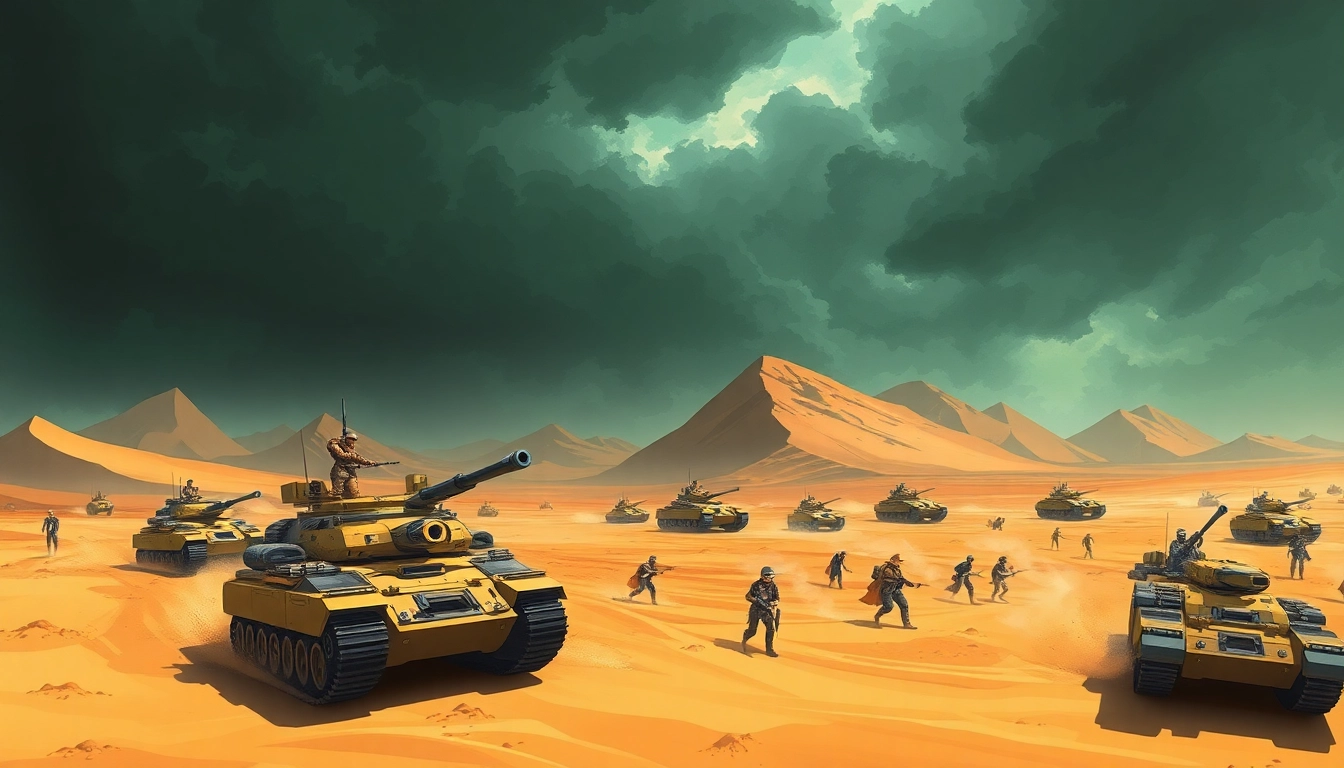
Mastering the Dune 2 Game: Strategies, Tips, and Essential Insights
Introduction to the Dune 2 Game
The world of gaming has given rise to numerous franchises, but few have captured the imagination of players as much as the dune 2 game. Released in the early 1990s, this game is often regarded as the father of real-time strategy (RTS) games. As you traverse through the arid terrains of the desert planet Arrakis, or Dune, you will discover robust gameplay mechanics that have influenced countless titles that followed. This article aims to delve deeper into the intricacies of Dune 2, exploring its gameplay, strategies, character analysis, community insights, and more.
Overview of Gameplay Mechanics
At its core, Dune 2 utilizes a blend of resource management, strategic planning, and real-time combat. Players choose from one of three factions—Atreides, Harkonnen, or Ordos—each with unique strengths and tactical advantages. The gameplay unfolds across a series of missions where players gather resources, construct bases, and engage in battles against enemy forces. The simplicity of the mechanics belies the strategic depth available to players, making every decision—from unit selection to resource allocation—crucial for success.
Setting the Scene: Dune 2’s World
The narrative of Dune 2 is closely tied to the rich lore of the Dune universe created by Frank Herbert. Set on the desert planet of Arrakis, players must navigate a harsh environment teeming with dangers, including sandworms and hostile rival factions. The game beautifully integrates environmental factors into the gameplay, compelling players to consider the terrain’s impact on strategy. Whether building a base on a rocky outcrop or deploying units in a sandy dune, recognizing the landscape’s nuances is essential for effective gameplay.
Why Dune 2 is a Classic
Dune 2 is often credited with laying the groundwork for the RTS genre, establishing conventions that would define the genre for years to come. The combination of fast-paced strategic gameplay, unique faction attributes, and engaging resource management creates a compelling gaming experience. Players who experienced Dune 2 often recall it as more than just a game; it’s a formative experience that molds one’s appreciation for strategy gaming. Its legacy continues, evident in modern titles that bear the fingerprints of this classic.
Understanding Dune 2 Game Strategies
Many players find that developing effective strategies enhances their experience in Dune 2 immensely. Winning not only requires individual skill but also understanding overarching strategies that can be implemented throughout the game.
Building Your Base for Success
Base construction is fundamental in Dune 2. Players must prioritize their base location, ensuring that it offers proximity to vital resources like spice and water. Initial decisions must be made regarding defensive structures, resource collectors, and unit production facilities. Effective players often scout the area to determine the best location for their base, ensuring that it can sustain both offense and defense.
Resource Management Techniques
The strategic importance of resource management cannot be overstated. Spice is the primary resource in Dune 2, and collecting it efficiently is critical for building and maintaining your military. Players must balance between expanding production capabilities and maintaining enough military force to defend against enemy incursions. Utilizing sandworms becomes a cunning strategy for controlling resource hubs, creating a sense of fear among rival factions. Resource scarcity creates tension, forcing players to make difficult decisions that can significantly impact their game’s outcome.
Combat Strategies and Tactics
Combat in Dune 2 reflects its real-time nature, requiring players to make quick decisions while deploying units effectively. Understanding unit strengths—such as the Atreides’ mobility versus the Harkonnen’s power—can make all the difference. Additionally, players must learn to utilize terrain effectively, leveraging high ground and obstacles for defensive advantages. Tactics like flanking and ambush can turn the tide of battle, allowing for strategic victories even when outnumbered.
Character and Faction Analysis in Dune 2
Each faction in Dune 2 offers different gameplay styles and unit types, adding layers of strategy and depth to player experiences. Understanding these differences is key to mastering the game.
Strengths and Weaknesses of Factions
The dynamic nature of factional strengths and weaknesses invites players to explore various strategies, offering significant replayability. The Atreides excel in mobility and stealth, making them formidable in reconnaissance and rapid assaults. The Harkonnen have a more brute-force approach, emphasizing high damage output with their units. The Ordos, often underestimated, bring unique technologies that can disrupt opponents. Recognizing these traits equips players with the tools needed to anticipate enemy moves and strategize effectively.
Choosing the Right Units for Battle
Unit selection is critical in Dune 2. Players have various units at their disposal, each serving distinct roles. From fast-moving raiders to heavily armored tanks, the right mix enhances strategic opportunities. Understanding combinations—such as pairing reconnaissance units with heavy artillery—can create an unstoppable force on the battlefield. Players must adapt their unit composition to address the current state of the game and the moves of their opponents, ensuring they remain unpredictable and decisive.
Character Development and Upgrades
Although Dune 2 does not focus on character leveling as found in role-playing games, players do influence the effectiveness of their units through smart decision-making. Limiting losses by avoiding reckless maneuvers ensures units can gather experience. Strategic unit upgrades become available over time, allowing players to modify their army to meet evolving threats. While upgrades can occasionally tip the balance in favor of one faction, understanding when to invest the resources is key to maintaining an edge over opponents.
Common Challenges in the Dune 2 Game
While the Dune 2 game offers thrilling experiences, players often encounter challenges that require keen problem-solving skills and adaptability.
Overcoming Resource Scarcity
Resource scarcity is a persistent issue in Dune 2. Players often find themselves under pressure to collect spice while simultaneously dealing with enemy attacks. Balancing resource allocation with building defenses becomes vital. Some players may choose to expand aggressively, while others prefer to consolidate power before venturing beyond their initial bases. Successful strategies often involve scouting for hidden spice deposits and negotiating map control while being responsive to threats.
Handling Enemy Attacks Effectively
Enemy attacks can be relentless, adding an intense layer of urgency to Dune 2. Being prepared requires players to establish robust defenses while maintaining enough offensive capacity to deter opponents. Early detection of enemy movements through scouting can help anticipate attacks, affording players time to build defenses or counterattacks. Understanding the weaknesses of enemy units can also provide players with opportunities to set effective traps or ambushes.
Adapting to Changing Game Dynamics
The dynamic nature of Dune 2 means that players must continually adapt their strategies. Changes may arise from unit losses, shifts in available resources, or the introduction of new tactics from opponents. Flexibility is crucial; sticking rigidly to a strategy can lead to failure. Adapting combat strategies to surprise opponents can turn the tide of the game. Moreover, staying informed about enemy faction strengths and technological advances can facilitate timely adjustments to unit deployment and resource management.
Community Insights and Player Tips for Dune 2 Game
The community surrounding Dune 2 provides a wealth of knowledge for both veteran players and newcomers alike. Engaging with this community can yield valuable insights that enhance gameplay.
Top Strategies from Seasoned Players
Seasoned players often share strategies that might not be immediately apparent. For instance, utilizing terrain to your advantage, employing hit-and-run tactics, and pooling resources with allies can amplify the effectiveness of gameplay. Additionally, studying enemy behavior can lead to insights that unlock counter-strategies. Getting involved in community discussions can offer players innovative strategies and a fresh perspective on popular methods.
Online Resources and Forums
Several online resources and forums exist where players can exchange tips, strategies, and gameplay critique. These platforms foster collaboration among players, allowing them to enhance their skills while discovering new techniques. Engaging with these communities also provides opportunities to form alliances and practice competitive play, enabling a deeper understanding of the game.
Creating a Personal Play Style
Ultimately, developing a personal play style is crucial for success in Dune 2. As players absorb strategies from others, they should experiment with different approaches and refine their methods to align with individual strengths and preferences. Whether favoring aggressive play or strategic defense, creating a distinct style contributes to a more enjoyable and fulfilling experience as players journey through the intricacies of Dune 2.
Conclusion
Engaging with the Dune 2 game transcends mere gameplay; it’s about immersing oneself in a richly crafted universe that has influenced generations of gamers. By mastering its mechanics, understanding faction strengths, and developing appropriate strategies, players can navigate the challenges presented by this iconic title. Dune 2 offers a rewarding experience that encourages both competitive play and collaboration, making it a cornerstone of the RTS genre. Experimenting with different styles and pooling knowledge with a vibrant community ensures that players not only survive but thrive in the harsh world of Arrakis.
